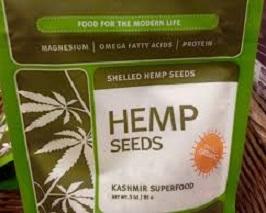Source: columbusfreepress.com

Welcome to the anniversary of the Great Cannabis Comeback. 20 years ago it seemed industrial hemp’s eminence here in the state with the heart of it all seemed not so far away. A few years tops, advocates thought. The subject was in the news regularly, pop culture was catching on and products ranging from textiles to food and cosmetics were becoming mainstream. It wasn’t just a fad.
There was a big problem with the poll numbers though, with Ohio voters being a walloping 40 percent undecided. This resulted in the funding plan for the industrial hemp and medical use initiative going up in smoke. The ball had to be handed off to the people to whom it would matter the most: The farmers. This is what the politicians were asking for with any hopes of a legslative bill.
Considering all plastics can be made from the cellulose and its seed more nutritious than a soybean, it shouldn’t be that hard of a position for them to advocate. It’s not marijuana.
In line with national strategy, gears shifted to convince the powers that be to allow universities to study the crop. Activists pie-in-the-sky visions of grandeur of mass fields everywhere sprouting up with all but a wave of a magic wand and a prompting of presto had to be put on the shelf.
A series of meetings with farmer groups were organized, a Canadian farmer came down to present the latest news straight from the forefront where they have been supplying North America’s demand. Two new economic feasibility studies were complete from North Dakota and Kentucky and all the right players were given copies. Cover letters were printed on hemp paper, courtesy of wholesalers, the Ohio Hempery, a thriving business integral to the cause. The Ohio Farmers Union added it to their agenda resulting in a resolution supporting alternative crops. All the tools were now in the hands of the primary stakeholders to take the issue on themselves.
Nothing happened. A proposed DEA ban on all industrial hemp products was not successful but was cause for dampened enthusiasm.
2014 became the most important year to date, gaining the most momentum with the passage of an industrial hemp clause in the federal Farm Bill, which, for the first time, legitimized research and a new wave to chalk up support dovetailed. None were had, with explanation being the need for the issue to actually be certified for the ballot in order to provide further consideration.
Other than official resolve to support alternative crops from the 1990’s, the same problems surfaced as before and was an attributing factor putting an end to the second attempt to place industrial hemp on the ballot. Nobody in the activist community tackled industrial hemp as a singular issue and always attached it to its therapeutic cousin. They are two different plants named for the same genus species.
Meanwhile other states made tremendous strides. 2017 was a huge year for hemp expansion. To date, 33 states have defined industrial hemp as distinct and removed barriers to its production. Taking immediate advantage of the research and pilot programs are Alabama, Arkansas, California, Colorado, Connecticut, Delaware, Florida, Hawaii, Illinois, Indiana, Kentucky, Maine, Maryland, Michigan, Minnesota, Montana, Nebraska, Nevada, New Hampshire, New York, North Carolina, North Dakota, Oregon, Pennsylvania, Rhode Island, South Carolina, Tennessee, Utah, Vermont, Virginia, Washington, West Virginia and Wyoming.
If Indiana, the most politically conservative place of all, can do it, certainly Ohio can. Someone must step up to the plate. Vote Hemp found that state licenses to cultivate hemp were issued to 1,424 farmers; and 32 universities conducted research. Votehemp.org is the best resource for the subject.
Widespread growth hasn’t happened because it is still prohibited by the federal government, and hemp farmers face logistical and legislative hurdles that hinder the full scale commercial cultivation to supply American consumers. Farmers rely on imported certified hemp seed from countries such as Canada and Italy, and the DEA has obstructed interstate commerce of U.S. grown and manufactured hemp seed oil and protein powder. This is why the cost is so seemingly expensive on store shelves. It needs more affordability.
The popularity of seed products has been driving the market but plastics, paper, building materials, hard bio-plastics for airplanes and car parts, energy efficient hempcrete, graphene used in super capacitator batteries and textiles are next. Ohio is the perfect place to grow, process and manufacture industrial hemp.
As this article is being published, a new well-funded full legal effort is being drafted that will include industrial hemp. 2018 can very well become the real year of the great cannabis comeback, to make this happen three key things are an absolute must. Education, education and education.
If interested in being involved with industrial hemp advocacy in Ohio, please email savehumancivilization@gmail.com
No comments:
Post a Comment